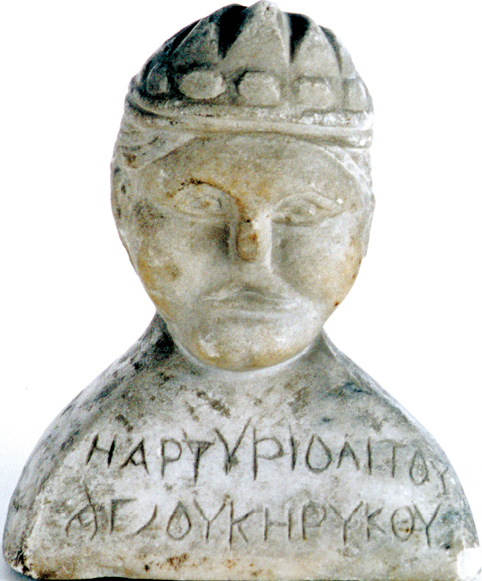Image Details

The Israel Museum, Jerusalem
Shapira’s fakes included large stone heads (one is shown here, compare with photo of additional stone head), some of them inscribed with meaningless Moabite script probably copied from the Mesha Stela. Although to us these carvings seem obviously fake, in 1873 the German government paid Shapira 22,000 thaler (about $235,000 today) for 1,700 “Moabite” artifacts.
The French scholar and diplomat Charles Clermont-Ganneau sensed almost immediately that the carvings and inscribed pottery were “the work of a forger.” He discovered that the “Moabite” ceramic ware was made of the same clay used by Jerusalem potters, including Shapira’s assistant Salim al-Kari. It was later revealed that al-Kari soaked the newly made “antiquities” in salt water to create a convincing patina. Although Clermont-Ganneau never directly accused Shapira of being complicit in the forgeries, we know that Shapira, in order to defend his collection, even had Moabite fakes seeded in desert locales, where they were to be “discovered” in excavations.
